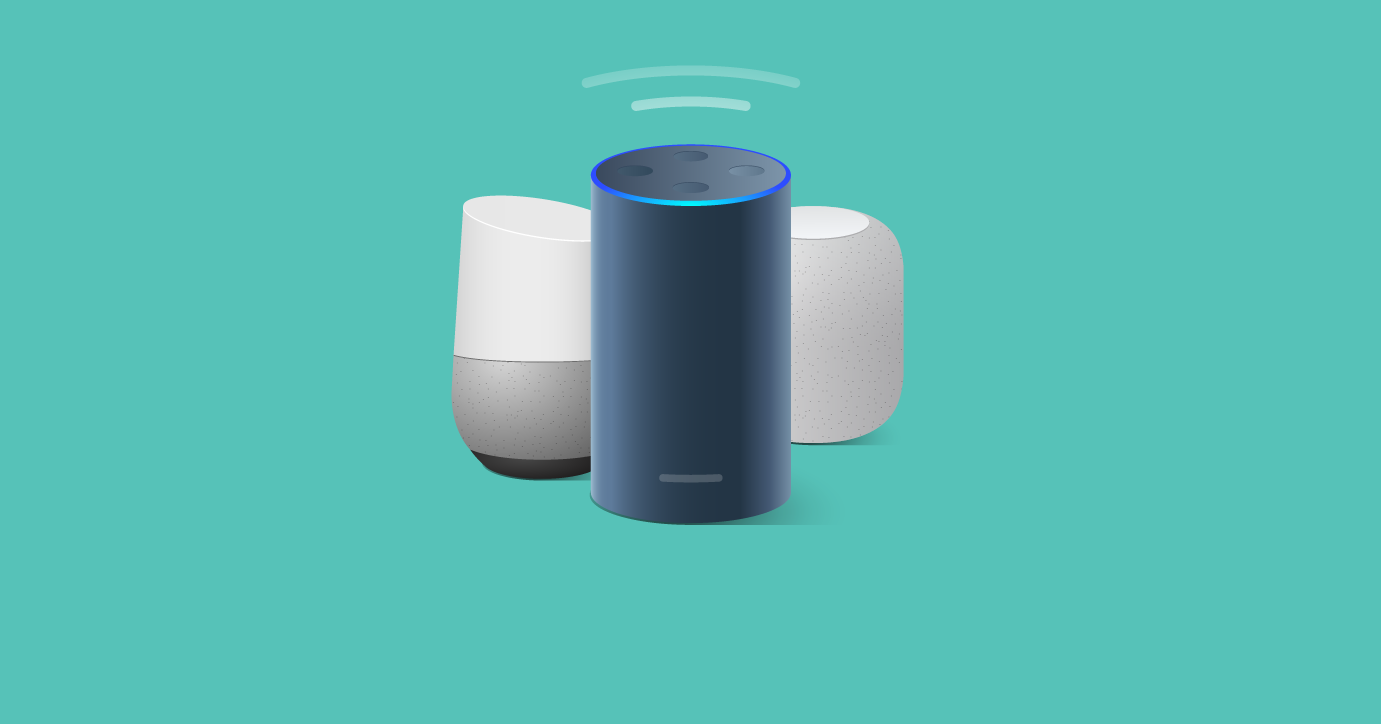Siri, Alexa, and Google, you may already have heard of these virtual assistant devices and what it does. Some of you may say at least one of these three names more than any other in a single day. You can say by observing your daily surroundings that the use of these voice personal assistants is growing at a remarkable pace. The intelligent voice assistant market is said to grow to $3.6 billion by 2020, according to Allied Market Research.

For marketers, this creates new challenges but also brings a lot of new opportunities. By utilizing new tools and ideas in your marketing field and having an open mind about the power of voice assistants, you can future-proof your brand and get ahead of the competition.
These four-voice assistant marketing simple strategies will help you secure your place in the future:
1. Hands-Free Service

As you know, the voice assistant market is dominated by four key players: Apple with Siri, Google with Google Assistant, Amazon with Alexa, and Microsoft with Cortana. These tools become implanted in our lives, so let’s revisit their original, unique intentions.
Siri was designed by Apple to deliver relevant information and perform actions with your voice like navigation and search.
Alexa is designed by Amazon and is not available on a variety of home devices. It’s less about accessing information and more about helping within your home environment and normal routine. This means you can do anything from creating a shopping list and ordering items.
Google Assistant is a self-learning voice assistant that works both on mobile and on Google Home devices. Natural language processing and semantic search are two of its strongest advantages.
While these voice assistants have a few distinctive features, they all exist to help consumers discover the high-quality, relevant information they are looking for, using only their voice. As a marketer, you should not force information but find a way to fit seamlessly into that consumer experience.
2. An Helping Hand

Voice assistants aim to help users the best way they can but first, it’s important to understand what ‘help’ they can provide and how that applies to the brand.
Answers and actions are the two types of responses generated by voice assistants.
- Answers are information from search engines in response to questions. Depending on the question, search platform, and assistant’s capability, it will either answer the questions with voice response or offer a web page where you can find the answer to your question.
- Action responses save you time by having the assistant perform an action for you. Tasks like “Take a photograph,” “Play calm sleepy music,” and so on.
As voice assistants become more embedded in our lives, new opportunities for different forms of content also arise. Users expect voice assistants to do more than answer questions or turn off lights. Similar to the way phones evolved to place a camera, games, and endless apps in users’ hands, voice assistants will soon provide more engaging entertainment on command. The number of voice games on Alexa is a clear indication of this shift. As a marketer, you can jump on this new trend to create games and quizzes both informational and fun for your audience to enable voice assistants.
Before creating your voice assistant marketing strategy, be very clear about what kind of result you want the assistant to generate. Depending on that outcome, you will either need to optimize your content for voice search or develop a skill for the voice assistant of your choice.
Most importantly, remember the content delivered by a voice assistant is meant to serve the user. Your brand takes the back seat. Great marketers need to refocus on how they can create content that offers a solution to a problem. Even if your product goes hand-in-hand with the solution, achieving a sale is not the primary purpose of the content.
3.The Question
Once you know what result you want to generate, it’s important to understand the types of content that can be discovered by voice assistants.
Different assistants deliver responses from different search engines. They choose the information that is clear, concise, relevant, and available on websites with higher domain and page authority. So the first thing you need to do is make sure you are on top of your SEO game.
Remember, everything from backlinks to your domain authority impact search results. So you need to optimize every piece of content to be voice assistant-friendly. By establishing strong SEO can help support your content that is aligned with voice assistant searches.
To serve answers promptly, voice assistants often respond with “snippet” results. Snippets are the short phrase responses that give the most relevant information from a webpage. While the page may contain more in-depth details, the voice assistant will focus on the clearest and relevant snippet that the user can quickly absorb. This means you need to make sure your content can easily be summarized into a valuable snippet. Giving clear and concise introductions to your content will help facilitate sharing via voice assistants.
Assistants also use meta-data to identify suitable content within your website, so you should discuss speakable content and tags with your web developer.
When optimizing your content, always create your content with your users’ intents in mind. You should be focusing on are questions your users would ask their voice assistant and how your content can provide the most valuable answers.
Last but not least, your audience should feel as though they hear an engaging story. If your content is overrun with run-on sentences or has a monotonous rhythm, listeners will tune out. Voice assistants read the content they find the best so the tone of voice of your content becomes a very important part.
4. Personalized Results

One of the important aspects of voice assistants is artificial intelligence capabilities. The more users interact with these devices, the more the assistants learn. With constant interaction, they can respond with more personalized results that match users’ unique needs.
For marketers, this means that you can cater to the customer based on who they are and what usually they are interested in. When it comes to personalizing the customer experience, this is certainly a huge opportunity for marketers.
As you prepare your voice assistant marketing plan, be sure to notice trends and systems updated in the growing popularity of these different voice assistant devices. Keep an eye on technologies and platforms that enable this type of personalization in the years to come.
Think about what this means for content marketing. Consider what users may be searching for to customize your content even further. See what kinds of information or actions might a user request from a voice assistant depending on the area of the home they are in?
Final Words
Voice assistants are constantly evolving to better meet users’ needs. For marketers, this means it’s time to start thinking about the “next step.”Marketers should prepare for this user assistant relationship by creating content that creates a natural flow of conversation.
Technology is constantly changing how marketers approach their branding strategies, and voice assistants are the next factor that can affect your growth. By understanding the features and developments, your brand marketing can evolve with the changing needs of your customers.
Digital Presence Today have already taken the next step to create user-friendly experiences by understanding the features and developments in voice assistant. With an excellent track record of creating powerful user experiences, your voice assistance marketing strategy will be in best hands. To know more, visit, www.digitalpresence.today.









